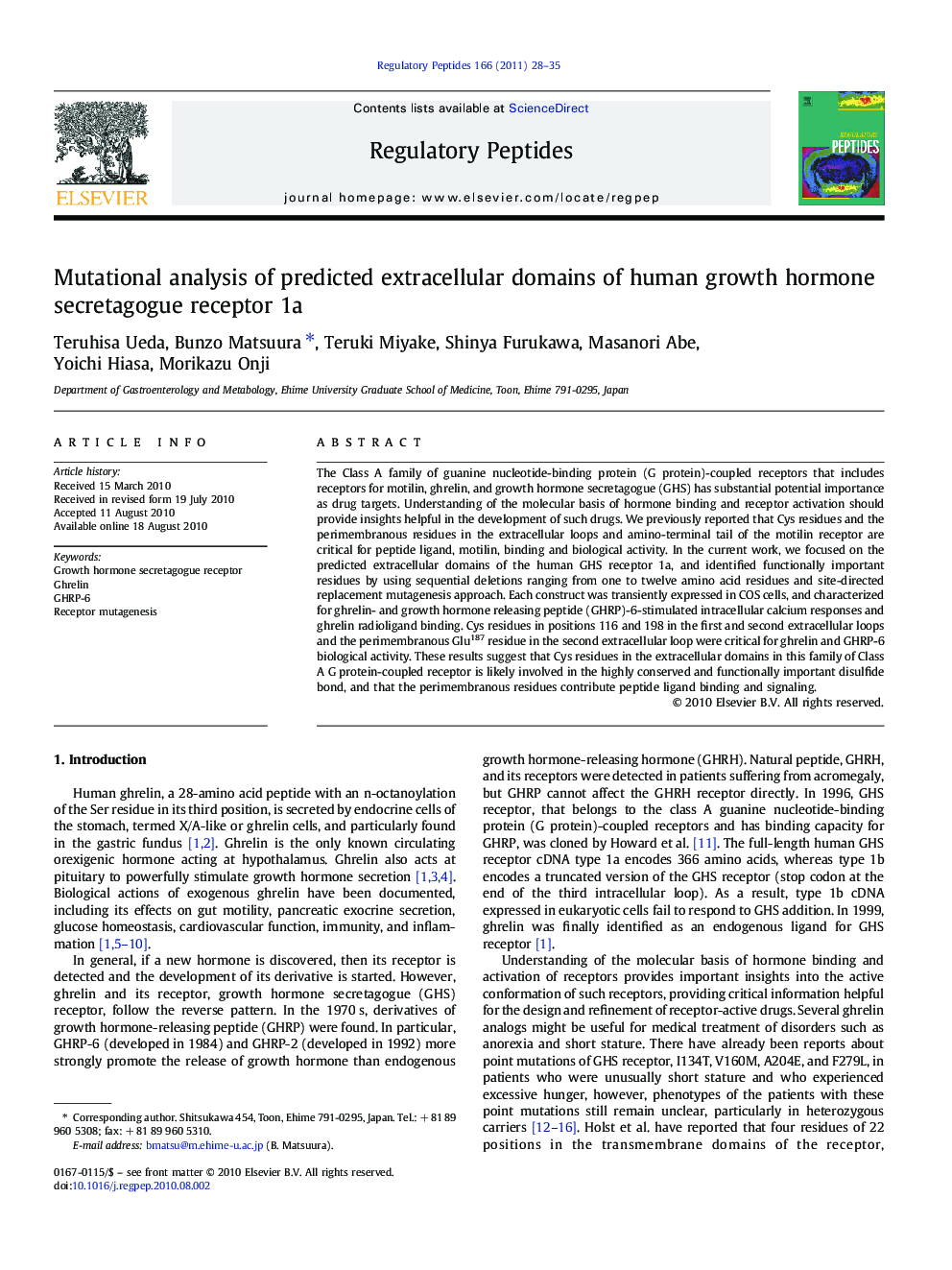| Article ID | Journal | Published Year | Pages | File Type |
|---|---|---|---|---|
| 2022610 | Regulatory Peptides | 2011 | 8 Pages |
The Class A family of guanine nucleotide-binding protein (G protein)-coupled receptors that includes receptors for motilin, ghrelin, and growth hormone secretagogue (GHS) has substantial potential importance as drug targets. Understanding of the molecular basis of hormone binding and receptor activation should provide insights helpful in the development of such drugs. We previously reported that Cys residues and the perimembranous residues in the extracellular loops and amino-terminal tail of the motilin receptor are critical for peptide ligand, motilin, binding and biological activity. In the current work, we focused on the predicted extracellular domains of the human GHS receptor 1a, and identified functionally important residues by using sequential deletions ranging from one to twelve amino acid residues and site-directed replacement mutagenesis approach. Each construct was transiently expressed in COS cells, and characterized for ghrelin- and growth hormone releasing peptide (GHRP)-6-stimulated intracellular calcium responses and ghrelin radioligand binding. Cys residues in positions 116 and 198 in the first and second extracellular loops and the perimembranous Glu187 residue in the second extracellular loop were critical for ghrelin and GHRP-6 biological activity. These results suggest that Cys residues in the extracellular domains in this family of Class A G protein-coupled receptor is likely involved in the highly conserved and functionally important disulfide bond, and that the perimembranous residues contribute peptide ligand binding and signaling.
